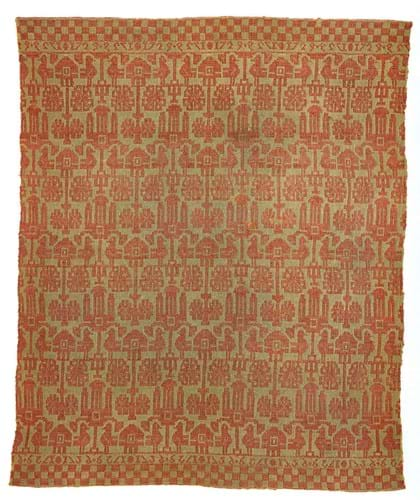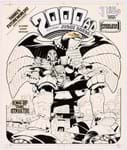
The coverlet, a 5ft 6in x 4ft 2in (1.68 x 1.28m) two-colour wool double cloth woven in red and yellow-green, is a remarkable survivor of a once common domestic textile type known as ‘Scotch Carpets’.
The repeating pattern of paired birds and flowering trees and the date 1729 suggest it was made to mark a marriage or a betrothal.
It has been handed from first daughter to first daughter since before the marriage of Richard Storrar of Orphat to Margaret Paterson in 1787.
Handloom-woven
The precise place of manufacture is uncertain. Georgian inventories and contemporary advertising suggest handloom-woven coloured and patterned bed covers such as this were hugely popular in Scottish homes and were exported to many parts of Europe and the Americas.
An advert placed by the Dalkeith Carpet Manufactory in the Caledonian Mercury dated April 1763 describes ‘the very best Scots [sic] Carpets, both ingrained and common colours; also coverings of all kinds for the navy or hospital bed’.

A detail of The Storrar Coverlet that was bought by National Museums of Scotland ahead of a Lyon & Turnbull auction.
However, similar patterned coverlets were made in Scandinavia, which enjoyed strong trading links with Scotland. This rare survivor, being sold by Storrar descendants, was previously on display in a National Trust for Scotland property, Falkland Palace. Much of the research and the sale process was handled for L&T by consultant Stephanie Donaldson.
Withdrawn prior to sale on August 14, a deal was finalised with the National Museums of Scotland early last week.
The price paid is thought to be close to the estimate of £10,000-15,000.














